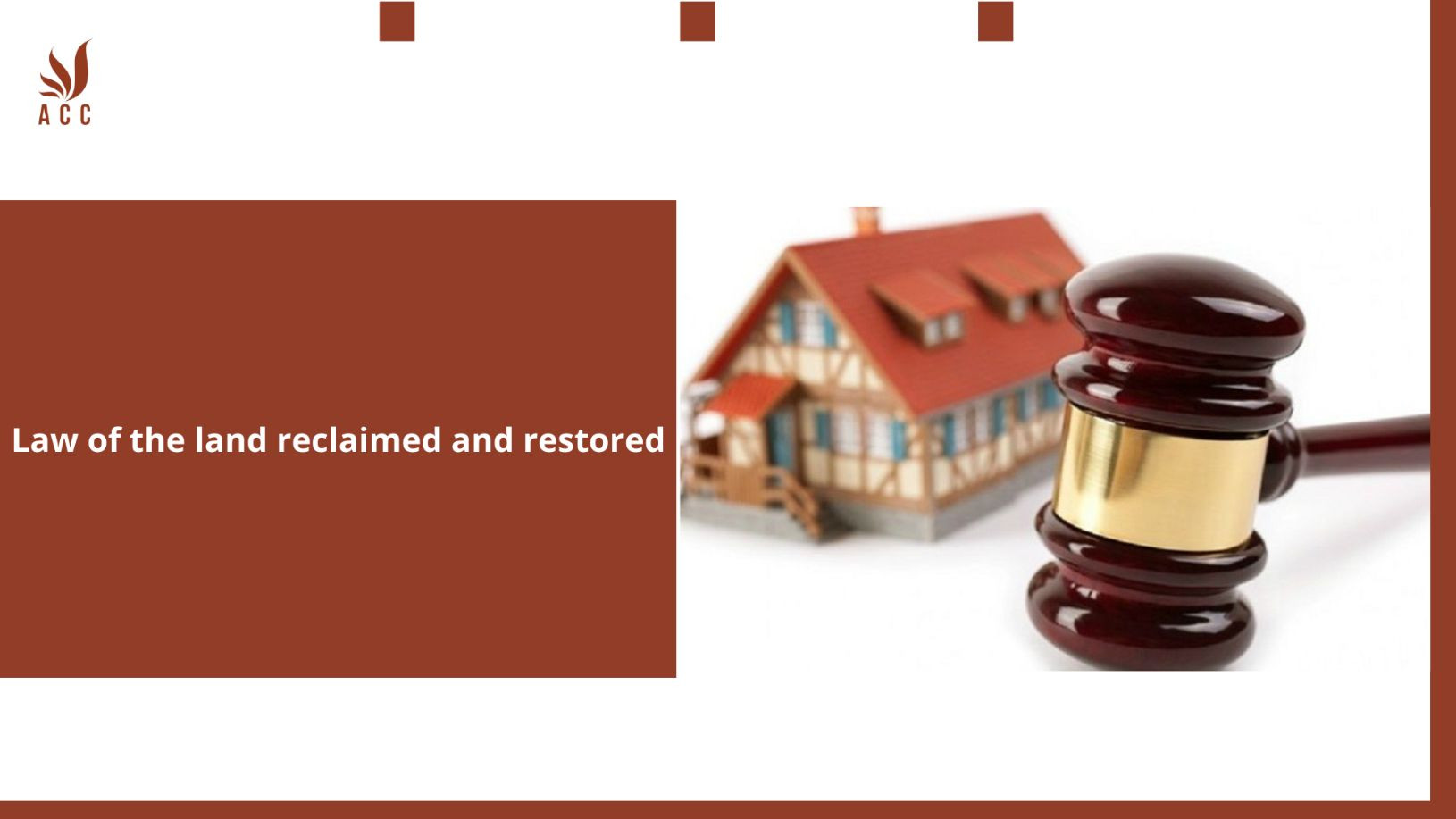The phrase "law of the land reclaimed and restored" appears to suggest a legal concept related to the reclamation and restoration of land. This concept can be applied in various contexts, often concerning land use and environmental regulations. Here's a general explanation of this concept:

I. Reclamation of Land:
Reclamation refers to the process of restoring and improving land that has been previously degraded or altered due to activities like mining, industrial use, or environmental damage. The reclamation process aims to return the land to a functional and sustainable state. Legal regulations often govern the reclamation of land, including requirements for restoration, environmental impact assessments, and permitting processes.
II. Restoration of Land:
Restoration is the act of returning land to its original or natural state, especially after it has been affected by human activities. This process involves activities such as planting native vegetation, removing contaminants, and rehabilitating ecosystems. Restoration efforts are often guided by environmental laws and regulations.
The "law of the land reclaimed and restored" is typically a set of legal principles and regulations that govern the process of reclaiming and restoring land. These laws are designed to:
-
Promote Environmental Conservation: The legal framework aims to protect and conserve natural ecosystems, ensuring that the reclamation and restoration activities are in line with environmental sustainability goals.
-
Set Standards and Requirements: The law specifies standards and requirements for land reclamation and restoration projects. This can include the use of native species in replanting, soil remediation, and water quality improvement.
-
Permitting and Compliance: It outlines the permitting process that landowners or organizations must follow to undertake reclamation and restoration activities. Compliance with legal requirements is essential.
-
Liability and Accountability: Legal regulations may address issues of liability and responsibility for the success of land reclamation and restoration efforts.
-
Monitoring and Reporting: The law often requires ongoing monitoring and reporting on the progress and success of reclamation and restoration projects.
-
Public Participation: Public participation and consultation may be mandated in certain cases, ensuring that communities and stakeholders have a say in the reclamation and restoration process.
III. When using ACC Law Firm's land-related services, entrepreneurs will receive
When using ACC Law Firm's land-related services, entrepreneurs will receive expert advice and assistance in navigating various legal aspects of land ownership and transactions. This includes guidance in property acquisitions, leases, zoning regulations, land use planning, and any other land-related legal matters. ACC Law Firm's team of experienced attorneys will provide personalized support to entrepreneurs, ensuring compliance with applicable laws and regulations, protecting property rights, and optimizing the value of their land investments.
IV. Q&A
Question: What is meant by the "Law of the Land Reclaimed and Restored"?
Answer: The "Law of the Land Reclaimed and Restored" suggests a legal framework or principles related to the reclamation and restoration of land, particularly in the context of environmental conservation, land rehabilitation, or revitalization efforts.
Question: How does land reclamation impact environmental law?
Answer: Land reclamation often involves altering or restoring natural land features. Environmental laws play a significant role in regulating these activities to ensure that they do not harm the environment, damage ecosystems, or violate conservation and protection measures.
Question: What legal mechanisms are used to restore land to its original state?
Answer: Legal mechanisms for restoring land may include environmental regulations, zoning laws, land use planning, and conservation easements. These measures can govern land development and guide efforts to rehabilitate or return land to its natural state.
Question: Why is the "Law of the Land Reclaimed and Restored" important in contemporary society?
Answer: This legal concept is crucial for addressing environmental concerns, sustainable land use, and the preservation of natural resources. It helps ensure responsible land management practices and the protection of ecosystems, making it relevant in today's context of environmental awareness and conservation efforts.
Nội dung bài viết:






Bình luận